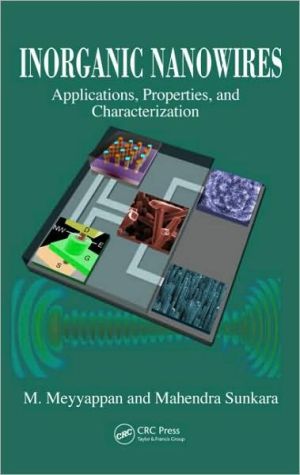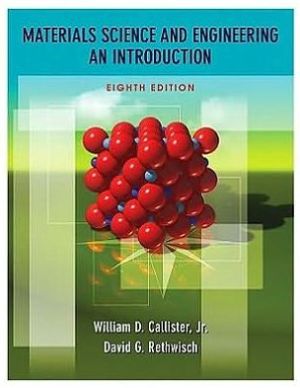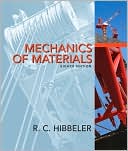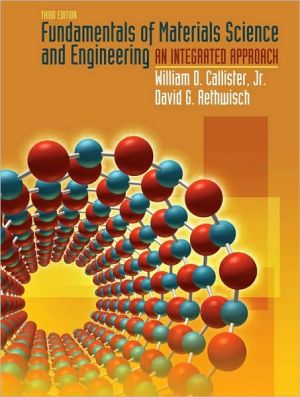Inorganic Nanowires: Applications, Properties, and Characterization
Advances in nanofabrication, characterization tools, and the drive to commercialize nanotechnology products have contributed to the significant increase in research on inorganic nanowires (INWs). Yet few if any books provide the necessary comprehensive and coherent account of this important evolution.\ Presenting essential information on both popular and emerging varieties, Inorganic Nanowires: Applications, Properties, and Characterization addresses the growth, characterization, and...
Search in google:
Advances in nanofabrication, characterization tools, and the drive to commercialize nanotechnology products have contributed to the significant increase in research on inorganic nanowires (INWs). Yet few if any books provide the necessary comprehensive and coherent account of this important evolution.Presenting essential information on both popular and emerging varieties, Inorganic Nanowires: Applications, Properties, and Characterization addresses the growth, characterization, and properties of nanowires. Author Meyyappan is the director and senior scientist at Ames Center for Nanotechnology and a renowned leader in nanoscience and technology, and Sunkara is also a major contributor to nanowire literature. Their cutting-edge work is the basis for much of the current understanding in the area of nanowires, and this book offers an in-depth overview of various types of nanowires, including semiconducting, metallic, and oxide varieties. It also includes extensive coverage of applications that use INWs and those with great potential in electronics, optoelectronics, field emission, thermoelectric devices, and sensors.This invaluable reference:Traces the evolution of nanotechnology and classifies nanomaterialsDescribes nanowires and their potential applications to illustrate connectivity and continuityDiscusses growth techniques, at both laboratory and commercial scalesEvaluates the most important aspects of classical thermodynamics associated with the nucleation and growth of nanowiresDetails the development of silicon, germanium, gallium arsenide, and other materials in the form of nanowires used in electronics applicationsExplores the physical, electronic and other properties of nanowiresThe explosion of nanotechnology research activities for various applications is due in large part to the advances in the growth of nanowires. Continued development of novel nanostructured materials is essential to the success of so many economic sectors, ranging from computing and communications to transportation and medicine. This volume discusses how and why nanowires are ideal candidates to replace bulk and thin film materials. It covers the principles behind device operation and then adds a detailed assessment of nanowire fabrication, performance results, and future prospects and challenges, making this book a valuable resource for scientists and engineers in just about any field.
Preface xiAuthors xv1 Introduction 1References 52 Historical Perspective 7References 153 Growth Techniques 173.1 Introduction 173.2 Liquid-Phase Techniques 173.2.1 Template-Based Methods 183.2.1.1 Template Preparation 183.2.1.2 Deposition Methods 233.2.2 Template-Free Methods 323.2.2.1 Hydrothermal Method 323.2.2.2 Sonochemical Method 343.2.2.3 Surfactant-Assisted Growth: Soft Directing Agents 353.2.2.4 Catalyst-Assisted Solution-Based Approaches 363.3 Vapor-Phase Techniques 373.3.1 One-Dimensional Growth Concepts 383.3.1.1 Vapor-Liquid-Solid Schemes Using Foreign Metal Clusters 383.3.1.2 Vapor-Liquid-Solid Schemes Using Low-Melting Metal Clusters 393.3.1.3 Vapor-Liquid-Solid Schemes Using Large Size, Molten Metal Clusters 403.3.1.4 Vapor-Solid-Solid Scheme 403.3.1.5 Oxygen-Assisted Growth (OAG) Scheme 403.3.2 Source Generation and Reactors for Vapor-Phase Synthesis of Nanowires 403.3.2.1 Thermal Evaporation 413.3.2.2 Laser Ablation 423.3.2.3 Metal Organic Chemical Vapor Deposition 443.3.2.4 Chemical and Molecular Beam Epitaxy 473.3.2.5 Plasma Arc Discharge-Based Techniques 493.4 Bulk Production Methods 503.4.1 Hot Filament CVD Method 503.4.2 Supercritical Fluid Approach 523.4.3 Direct Oxidation Schemes Using Plasma 523.4.4 Direct Gas-Phase Reactions Using Plasma Discharges 533.5 Future Developments 55References 574 Thermodynamic and Kinetic Aspects of Nanowire Growth 614.1 Introduction 614.2 Thermodynamic Considerations for Vapor-Liquid-Solid Growth 634.2.1 Thermodynamic Considerations of Nucleation from Molten Metal Droplets 634.2.1.1 Gibbs-Thompson Relationship634.2.1.2 Nucleation from Molten Metal Alloy Droplet 654.2.1.3 Nucleation from Various Molten Metal Droplets 664.2.1.4 Thermodynamic Estimation of Supersaturation for Spontaneity of Nucleation 704.2.1.5 Rational Choice of Metal for Tip-Led Growth of Nanowires (Avoiding Nucleation) 734.2.1.6 Experimental Conditions for Promoting Tip-Led Growth Using Any Molten Metal 764.2.2 Interfacial Energy and Tip-Led Growth 774.2.2.1 Role of Interfacial Energy in the Nanowire Growth Stability 774.2.2.2 Role of Interfacial Energy in Nanowire Faceting 814.2.2.3 Role of Interfacial Energy on the Nanowire Growth Direction 854.3 Kinetic Considerations of Nanowire Growth under VLS Growth 874.3.1 Kinetics of Vapor-Liquid-Solid Equilibrium 874.3.2 Role of Direct Impingement in Growth Kinetics 894.3.3 Role of Surface Diffusion in Growth Kinetics 914.3.4 Direct Impingement and Diffusion 944.3.5 Role of Surface Diffusion on the Metal Droplet 954.3.6 Role of Interwire Spacing 97References 985 Modeling of Nanowire Growth 1015.1 Introduction 1015.2 Energetics of Stable Surface Faceting: Silicon Nanowire Example 1025.3 Simulation of Individual Nanowire Growth 1045.3.1 Simulation Methodology 1055.3.2 Kinetic Monte Carlo Simulation Results 1085.3.3 Experimental Results on Growth Direction and Surface Faceting 1125.4 Modeling of Multiple Nucleation and Growth of One-Dimensional Structures 1155.5 Modeling Nanowire Array Growth 117References 1216 Semiconducting Nanowires 1236.1 Introduction 1236.2 Silicon Nanowires 1236.2.1 SiCl4/H2 System 1246.2.2 Silane Feedstock in VLS Growth 1346.2.3 Other Sources 1356.2.4 Oxide-Assisted Growth 1366.2.5 Template-Assisted Synthesis 1376.2.6 Plasma Enhancement 1386.2.7 Doping of SiNWs 1396.2.8 Properties of SiNWs 1406.3 Germanium Nanowires 1426.3.1 Synthesis Using Germanium Powder 1436.3.2 Germane and Related Sources 1466.4 Catalyst Choice 1476.5 III-V Nanowires 1486.5.1 GaAs Nanowires 1496.5.2 InAs Nanowires 1526.5.3 InP Nanowires 1526.5.4 GaP Nanowires 154References 1557 Phase Change Materials 1617.1 Introduction i617.2 Phase Chang Nanowire Growth 1627.3 Properties Relevant to PRAM 167References 1698 Metallic Nanowires 1718.1 Bismuth Nanowires 1718.2 Silver Nanowires 1738.3 Copper Nanowires 1748.4 Nickel Nanowires 1768.5 Zinc Nanowires 178References 1809 Oxide Nanowires 1839.1 Introduction 1839.2 Synthesis Methodologies 1849.2.1 Catalyst-Assisted Synthesis 1849.2.2 Direct Oxidation Schemes Using Low-Melting Metals 1909.2.2.1 Direct Oxidation of Molten Metal Clusters 1909.2.2.2 Direct Chemical/Reactive Vapor Deposition of Low-Melting Metal Oxides 1939.2.3 Chemical Vapor Transport or Deposition of High-Melting Metal Oxides 1969.2.4 Plasma and Thermal Oxidation of Foils 2029.3 Directed Growth and Morphological Control 2069.3.1 Branched Nanowire Structures 2069.3.2 Networking of Nanowires 2089.3.3 Nanobelts 2099.3.4 Tubular Nanostructures 2129.3.4.1 High-Melting Metal Oxides 2129.3.4.2 Low-Melting Metal Oxides 2139.4 Oxygen Vacancies, Doping, and Phase Transformation 2149.4.1 Oxygen Vacancies 2149.4.2 Doping and Alloying 2169.4.3 Phase Transformation of Metal Oxide Nanowires 217References 22010 Nitride Nanowires 22510.1 Introduction 22510.2 Synthesis of Group III-Nitride Nanowires 22510.2.1 Catalyst-Assisted Synthesis 22610.2.1.1 Choice of Precursors 22910.2.1.2 Substrates for Epitaxial Array Growth 23010.2.1.3 Choice of Catalysts and Process Variables 23110.2.1.4 Control of Nanowire Growth Direction 23210.2.2 Direct Reaction and Self-Catalysis Schemes 23310.2.2.1 Control of Growth Direction 23910.2.3 Synthesis of Nanotubes 24010.2.4 Micro/Nanomorphologies 24310.2.4.1 III-Nitride Nanobelts 24310.2.4.2 Tapered Morphologies 24510.3 Branching of Nanowires 24710.3.1 Homobranching or "Tree-Like" Structures 24710.3.2 Heterobranching 24810.4 Diameter Reduction of III-Nitride Nanowires 24910.5 Direction-Dependent Properties 252References 25411 Other Nanowires 25711.1 Antimonides 25711.2 Selenides 26011.2.1 Zinc Selenide 26011.2.2 Other Selenides 26311.3 Tellurides 26411.3.1 Bismuth Telluride 26411.3.2 Cadmium Telluride 26511.3.3 Other Tellurides 26511.4 Sulfides 26611.4.1 Zinc Sulfide 26611.4.2 Other Sulfides 26711.5 Silicides 269References 26912 Applications in Electronics 27512.1 Introduction 27512.2 Silicon Nanowire Transistors 27812.3 Vertical Transistors 28012.4 Germanium Nanowire Transistors 28412.5 Zinc Oxide and Other Nanowires in Electronics 28612.6 III-V Transistors 28912.7 Memory Devices 29012.7.1 Phase-Change Random Access Memory 292References 29613 Applications in Optoelectronics 29913.1 Introduction 29913.2 Photodetectors 29913.3 Light-Emitting Diodes 30313.4 Nanoscale Lasers 306References 31014 Applications in Sensors 31314.1 Introduction 31314.2 Chemical Sensors 31414.2.1 Sensor Requirements and the Role of Nanomaterials 31414.2.2 Nanowires in Sensor Fabrication 31714.2.3 Sensing Mechanisms 32714.2.4 Selectivity and Electronic Nose 33114.3 Biosensors 33714.3.1 Nanoelectrode Arrays 340References 34415 Applications in the Energy Sector 34915.1 Introduction 34915.2 Solar Cells 35015.2.1 Dye-Sensitized Solar Cells 35015.2.1.1 Titania Nanowire-Based DSSCs 35315.2.1.2 ZnO Nanowire-Based DSSCs 35715.2.1.3 SnO2 NW-Based DSSCs 35815.2.1.4 Inorganic Nanotubes, Polymers, and Nb2O5 Nanowires for DSSCs 35815.2.1.5 Quantum Dot Sensitizers for Nanowire-Based Solar Cells 36015.2.1.6 Hybrid/Composite Structures 36015.2.1.7 Transport and Recombination 36315.2.2 Direct Absorption PEC Cells 36615.2.3 p-n Junction Solar Cells 36615.2.4 PEC Cells for Chemical Conversion 36815.3 Electrochromic Devices 37315.4 Li-Ion Batteries 37715.4.1 Challenges with Anode Materials 37815.4.2 Challenges Facing Cathode Materials 37915.4.3 One-Dimensional Materials for Anodes 38015.4.3.1 Carbon Nanotubes (CNTs) 38015.4.3.2 Metal/Metal Oxide Nanowires 38115.4.3.3 Nanowires of Silicon and Related Materials 38615.4.4 Rational Concepts for Nanowire-Based Architectures 38715.4.4.1 A Concept of Nanometal Cluster-Decorated Metal Oxide Nanowires 38715.4.4.2 Nanowire Arrays on Conducting Substrates 38915.4.4.3 Miscellaneous Concepts of 3-D Geometries 39015.4.5 Nanowire-Based Materials for Cathodes 391References 39316 Other Applications 39916.1 Field Emission Devices 39916.1.1 Background 39916.1.2 Work Function (?) 40016.1.3 Field Emission Testing 40116.1.4 Field Emission Characteristics of Nanowire-Based Materials 40416.2 Thermoelectric Devices 414References 416Index 421








